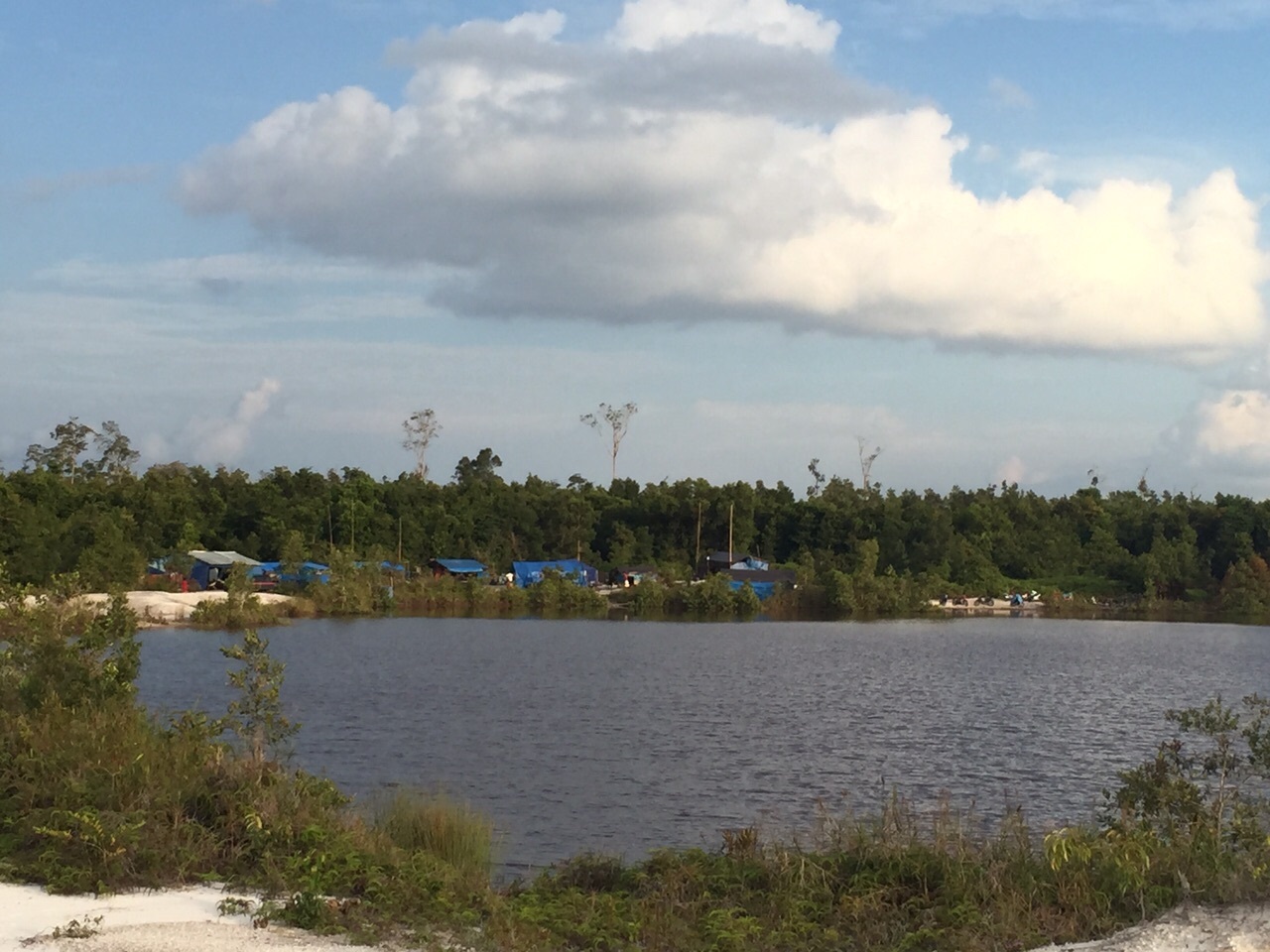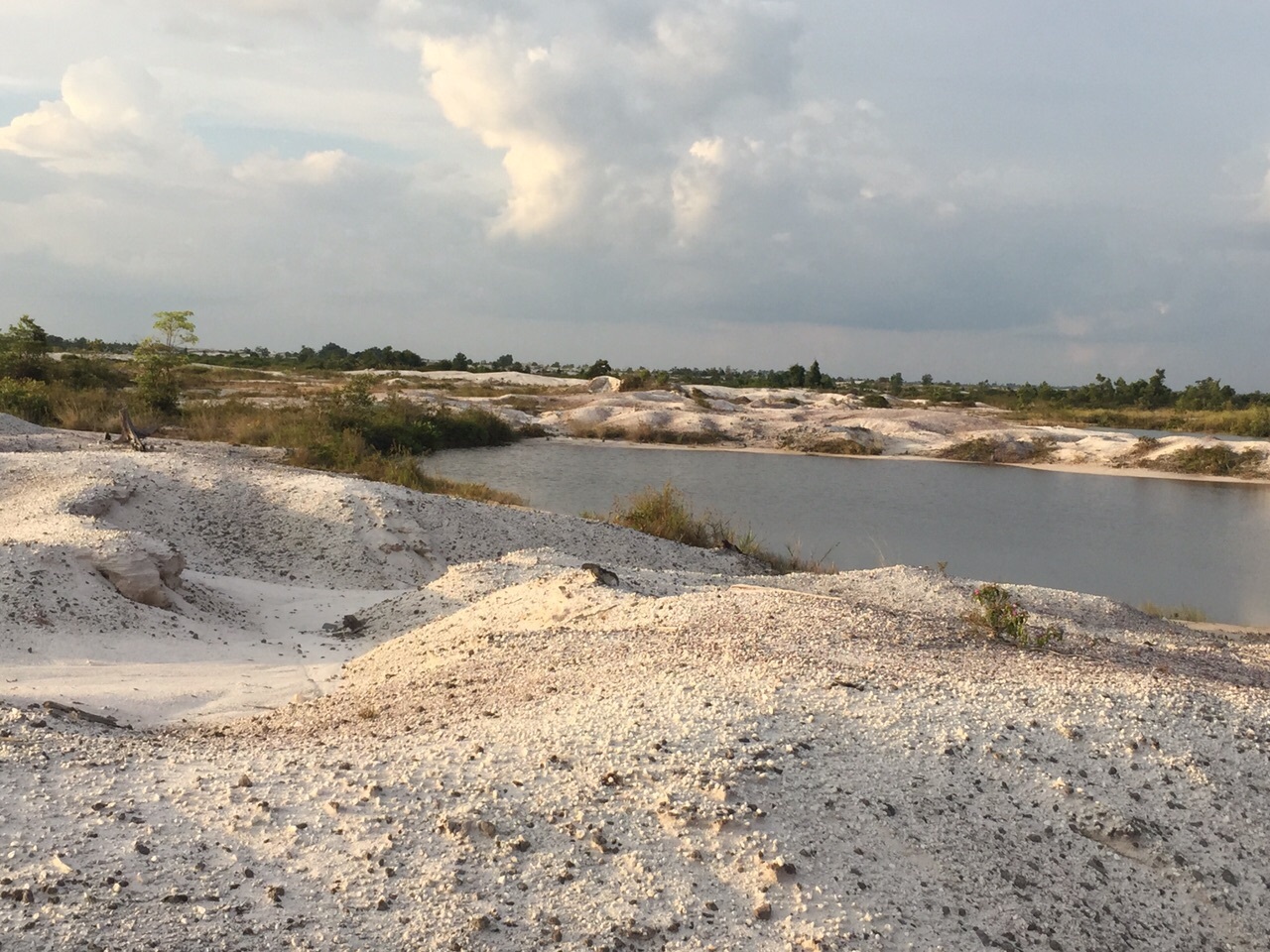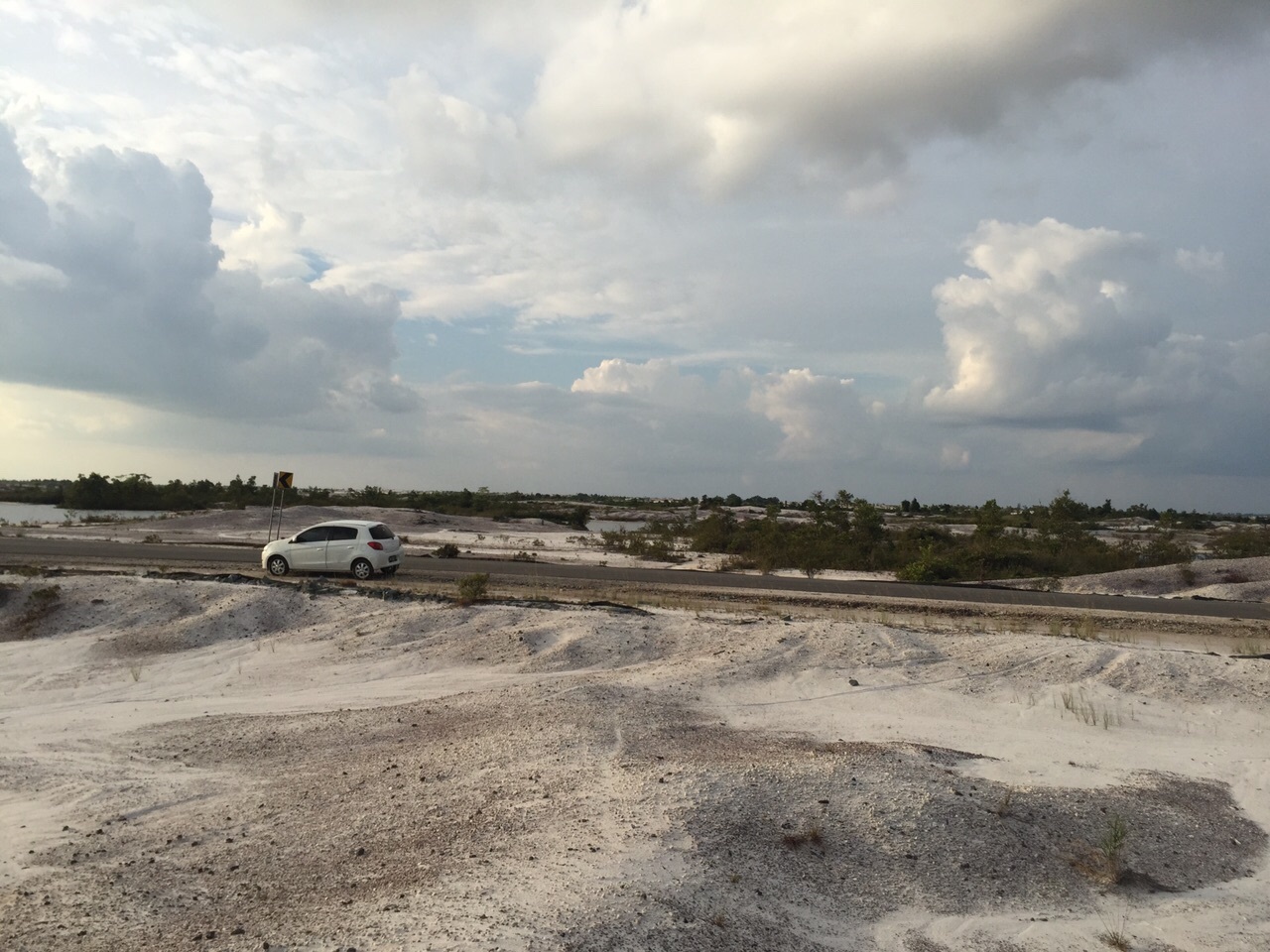After reformasi, Kereng Pangi, Kalimantan became the site of a gold rush
Kereng Pangi, located about 120 kilometres west of Palangkaraya, the capital of Central Kalimantan province, was the site of a goldmine operated by PT Ampalit Mas Perdana during the 1990s. Following reformasi and the declaration of the region as autonomous in 1999, locals (Dayaks) and migrants began to loot the site without permission.
The Dayak tradition of exploring for and extracting gold pre-dates independence. While swidden agriculture was the primary livelihood, in the off-season traditional tools and techniques were used to seek gold in the rivers. Gold chips were simply retrieved from the river banks and washed. In line with national policy, Law No. 11/1967 on Basic Provisions for Mining required mining activity to be licensed by the state, rendering illegal the Dayak tradition of gold mining. The law was viewed as giving excessive authority to the central government and was subsequently replaced by Law No. 4/2009 on Mineral and Coal Mining, which gave local governments a much greater role in regulating mine exploration. For example, local governments at provincial and district levels now issue mining permits.
Following the move to regional autonomy after 1999, the Dayak people of Kereng Pangi seized the opportunity to once again mine their own land for gold. PT Ampalit Mas Perdana, the company licensed to mine the area, was occupied and then forced out by local people who felt they had not benefited from the mine. Kereng Pangi soon became the site of a gold rush, with newcomers from Java also arriving to seek their fortune as small-scale miners.

The gold rush attracted fortune-seekers from far and wide; the barren ground surrounding the area hints at the resulting environmental damage. (Semiarto A Purwanto)
Farmers become miners
While conducting research in Kereng Pangi in 2015, the author met a girl working as a street-side snack vendor in the mining area. She came from East Java to join her sister’s family, who had worked in the mining area for around eight years. The girl said that business had declined after ten years of good returns. A professor at the University of Palangkaraya has suggested this decline was the result of ineffective policies at the local level. The village head explained that the village government had allocated the forest area to villagers on the basis of customary law rather than formal law, allowing them to conduct mining activities on their own land.
Small-scale mining is subject to individual arrangements. As long as a miner can obtain a permit from the land owner in the form of a written contract or an oral agreement, they can exploit the land. Where the land is controlled by the village, a miner can seek written permission from the village head. If a miner or their family are landowners, they may carry out mining activities on their own land. The gold trade has similar straightforward arrangements. Traders operate locally to buy gold, on-selling to big buyers from Palangkaraya.
Some villagers had mined their land for gold, others had rented to migrant miners. Soon gold deposits were exhausted in the two hectares allocated to each village household. In order to continue mining, thousands of gold miners relocated to other sites, including the abandoned mine site of PT Ampalit Mas Perdana. This site quickly became degraded, increasingly resembling a moonscape.
The damage is a consequence of the use of machines such as excavators and backhoes to dig out the soil containing gold deposits. Mercury was used to process the gold from ore. Mercury contamination in the three biggest rivers in Central Kalimantan continues to exceed the safety threshold of 2000 micrograms per litre of water mandated by Government Regulation No. 82/2001 on Management of Water Quality and Pollution. In 2008, mercury contamination in Barito River reached 5519 micrograms, 4687 micrograms in the Kahayan River and 7029 micrograms in the Kapuas River. In 2014, a local newspaper reported that the contamination was still high in those rivers.

The damage wrought to the environment eventually created a view resembling a moonscape. (Semiarto A Purwanto)
Loopholes
Through field-based research, the author observed six strategies by small-scale miners to subvert government attempts to regulate or control them, and to continue their mining activity.
The first strategy relates to licensing. A group of local miners formed a company to mine quartz sands and zircon abandoned at Kereng Pangi, declaring the extracted gold to be a ‘side product’. Classified in this way, the operation required an inexpensive and readily obtainable ‘Type C’ license that usually permits the mining of sand and gravel. The Type C license was previously issued by local government at the district level under Ministerial Decree No. 26/1994. Law No. 23/2014 on Local Government subsequently mandated the provincial government to issue the license.
The second strategy involves villagers setting up a small company or cooperative for which gold mining is not disclosed as the primary business, but rather, transportation, construction or some other activity.
NGOs partnering with local communities to advocate on behalf of traditional miners provides a third strategy. In Central Kalimantan, Yayasan Tambuhak Sinta has developed an economic model to involve traditional miners, local government and a mining company in a partnership program. While the program’s primary aim was to reduce mercury use, it has also enabled miners to feel more secure about their activities.
A fourth strategy involves thwarting local government efforts to curtail illegal mining by interrupting the supply of fuel and mercury. A team of local government officials and police officers was formed to conduct operations to stop illegal mining by cutting the supply of fuel and mercury and arresting the parties involved. Many observers believe that these efforts failed due to connections between local strongmen involved in this activity and the local government, police and military officials responsible.
Bribery and secret agreements (tahu sama tahu) among miners, traders and regulators offers a fifth strategy. The author was informed by one miner that it is not difficult to secure a community mining permit if you ‘know the rules’; that is, if you offer the right official some money. Good relations with regulators or police ‘insure’ one’s business. For example, the miner said, local police officers will provide advance warning of any anti-illegal mining operations.
A sixth strategy relates to permits. Some small miners do not feel obliged to fulfil the regulation to obtain a permit and may rely on others with more capital to obtain mining permits. Once larger-scale miners had obtained permits, the mining site was considered by smaller miners to be ‘safe’.
Small-scale mining is unsustainable
Under this new regime, some miners have become wealthy and acquired a good standard of living. Food, housing, health services and education are affordable. These comforts have come at a cost to the environment, however. The land surface is pitted and devoid of vegetation and rivers sustain high levels of mercury contamination. Some rubber plantations, previously the main source of cash, have been replaced by fields for mining. However, gold mining is not a sustainable livelihood.
Interactions between miners, regulators and security officers have led to illegal practices becoming institutionalised. Small-scale miners carry out their work without permits or adherence to regulations. Decentralisation policies have exacerbated the situation, with the local Dayak people taking advantage of the opportunity to exploit their natural resources after years of marginalisation by the central government and the mining companies. People from other islands also came to Kalimantan attracted by the prospect of fast, easy money. The institutionalisation of illegal mining practices will ultimately destroy people’s livelihoods if serious action is not taken by the government and the community.
Semiarto A Purwanto (semapur@yahoo.com) is a lecturer in the Department of Anthropology at Universitas Indonesia.
